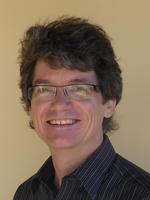Armin Schmidt
Chair
since 10 Sep 2021

Although my earliest aspiration was to become an 'inventor' (a suitably broad job description), my fascination was always with history and ancient civilisations. However, in the end the natural sciences got the better of me and in 1982 I began to study Physics at the University of Technology Munich (Technische Universität München). One of the key events for me during that time was a seminar given by Helmut Becker in which he described his wonderful results from archaeological prospection using Caesium magnetometers. I was hooked. Unfortunately, the university's lecture series on archaeometry had, for my taste, far too little geophysics in it and in the end I decided to do my master's dissertation on electron mobility in liquid Argon at the Max-Planck-Institut für Physik (Heisenberg Institute). Thereby, I had entered the path of low temperature physics and continued with a PhD at the Rheinisch Westfälische Technische Hochschule (RWTH) in Aachen on the subject of magnetostriction on high-temperature superconductors. Very interesting, but time had come for me to move into archaeological prospection. When I looked round for the best place to go in 1994, it became very clear that Bradford was the lead institution for archaeological geophysics and eventually I became Senior Lecturer in Archaeological Geophysics there.
Archaeological geophysics had been built up in Bradford by Arnold Aspinall and for me, like for many others, he was a constant source of inspiration. He and Mark Pollard were the founding editors of the journal Archaeological Prospection. Even after retirement he actively carried out his research, undertaking experiments with different electrode array geometries in the water tank. I was involved in Bradford's MSc in Archaeological Prospection since its beginning in 1994 and as course manager was leading the training of highly motivated students in this field, which has been very rewarding. Since leaving this University position I now carry out research, teaching and advice in the consultancy firm GeodataWIZ.
I have been involved in many interesting research projects over the years. From the surveys of a twice-deserted Medieval Village in Yorkshire, England to the investigation of pre-Hispanic shaft graves along the Ecuadorian coast, they all have been exciting. One of my favourite sites is Lumbini in Nepal where we investigated the birthplace and childhood palace of The Lord Buddha during several UNESCO missions. In all these projects the interaction between archaeologist and geophysicist was crucial for the final interpretation of results and it is the challenge of working at an interdisciplinary level that makes these missions so rewarding. There is a willingness to listen to each other and accept that people have different expertise and research cultures (think: 'developing a new type of magnetometer' vs. 'the investigation of 100 Roman villas'). A list of publications can be found on my web page.
My more geophysics-orientated research has concentrated on the development of new magnetometer techniques and on the processing of magnetometer and GPR data. I also undertook integrated geoarchaeological projects, especially in Iran. Archaeological prospection is a rich subject and it has never bored me. Joining this Society of like-minded researchers and practitioners is a good way of connecting the different strands and ideas that make this such an exciting subject.
